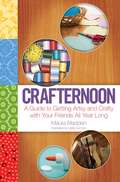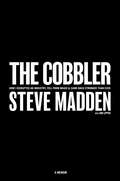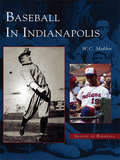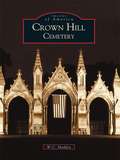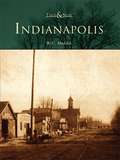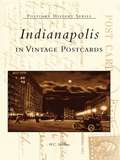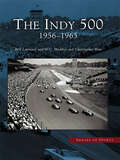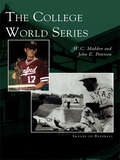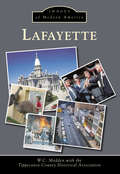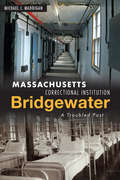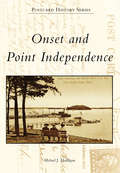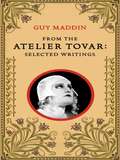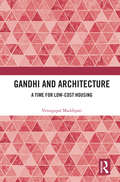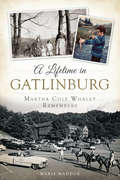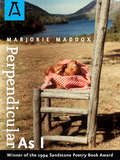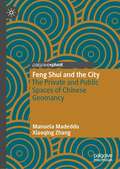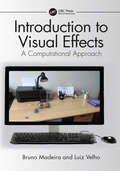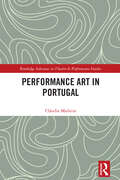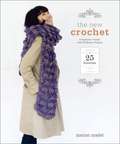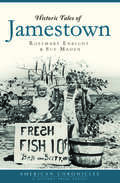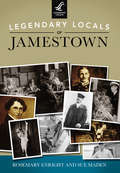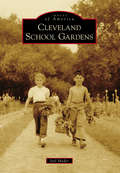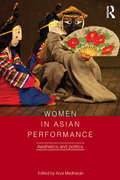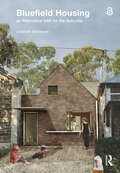- Table View
- List View
Crafternoon
by Maura MaddenHello, Crafternooners! Maura Madden invites you to enjoy a fun-filled afternoon of crafting.... Named after a monthly event that comedian and crafting superstar Maura Madden began hosting in 2002 as a way to get her friends together, meet new people, and have a good time making some cool stuff, Crafternoon is both an entertaining how-to guide and an irreverent social manifesto. Organized by month and theme, Crafternoon explains how to create and host a fun-filled casual gathering (including recipes for snacks and decorating tips) that celebrates the art of crafting. Knot nautical-themed crafts to wear, quilt new additions to your home decor, make the perfect gift for any holiday, or feel free to BYOP (bring your own project). All crafters are always welcome and encouraged to bring guests, and if your knitting or clay-shaping skills are a bit rusty, that's fine, too -- there are instructions aplenty! A must-have for anyone who wants to get their craft on, this quirky guide offers a twelve-month blueprint for a year of connecting with friends old and new, and enjoying a possibly messy, but always fulfilling afternoon.
The Cobbler: How I Disrupted an Industry, Fell from Grace, and Came Back Stronger Than Ever
by Steve Madden Jodi LipperThe man behind the iconic shoe brand recounts his rise to the top, struggle with addiction, time in prison, and ultimate recovery in this candid memoir. Everyone knows Steve Madden&’s shoes, but few are familiar with the man behind the brand. Over the past thirty years, Madden has taken his eponymous shoe company from a fledgling startup he founded with a mere $1,100 to a global, multibillion-dollar enterprise. But Madden&’s mistakes, from his battle with addiction to the financial shortcuts that landed him in prison, are as important to his story as his most iconic designs. In this raw, intimate, and ultimately inspiring book, Madden holds nothing back as he shares how he got where he is and the lessons he&’s learned along the way. From his unconventional hiring strategies to his slavish devotion to product, Madden offers a business perspective that is as unique as his style. In The Cobbler, readers are treated to the wild ride though Madden&’s meteoric rise, dramatic fall, and stunning comeback. But they will also walk away uplifted by a man who owns up to his mistakes, determined to give back and use his hard-won platform to create positive change.
Baseball in Indianapolis (Images of Baseball)
by W. C. MaddenVictory Field, built in 1996 as home to the Indianapolis Indians, is considered by many today as the best minor league ballpark in the nation. But baseball has deeper roots in the Circle City, as fans of the Tribe will discover in the pages of Baseball in Indianapolis, which tells the story of the American pastime in the state capitol from the post-Civil War era up to the present day. Legends like Rube Marquard, Oscar Charleston and Roger Maris are all a part of Indianapolis' baseball heritage. So too are present-day stars like Randy Johnson, Larry Walker and Aaron Boone. Even Hank Aaron had a stint with the barnstorming Indianapolis Clowns in 1952, en route to his record-breaking career.
Crown Hill Cemetery
by W. C. MaddenIndianapolis' Crown Hill Cemetery is noted for its unique beauty and historic significance. Dedicated on June 1, 1864, the cemetery, at more than 555 acres, is the final resting-place to over 185,000 citizens and is one of the most historically significant areas in the city. Many of the country's great leaders, soldiers, entrepreneurs, and artists are buried within the cemetery's confines including: President Benjamin Harrison, Col. Eli Lilly, and the infamous John Dillinger, to name just a few. Within these pages of vintage photographs, the history and beauty of Crown Hill Cemetery is revealed. Author W.C. Madden examines such structures as the inspiring Waiting Station and Gothic Chapel, both of which were built in the 1800s. He also details the ground's viscerahl history exemplified by the National Cemetery, dedicated to those who served our country, and the Confederate lot on the cemetery's south grounds.
Indianapolis
by W. C. MaddenInaugurated as the state capital in 1825, Indianapolis was patterned after the nation's capital and laid out on a mile-square grid with Monument Circle at its center. As the city grew and experienced the tumult of the Civil War, legislators decided to erect a monument to the war's fallen servicemen. In 1902, one of the world's most outstanding memorials was completed-the Soldiers and Sailors Monument. Surrounding Monument Circle, "The Circle City" gets its nickname from the prominence and historical significance of the central city structure. Throughout the years, Indianapolis has maintained its commitment to honoring the achievements of Hoosiers. This dedication to Indiana has given the capital its own rich history, told not only through monuments and memorials, but also through the architecture, parks, businesses, and people that make up the heart of Indianapolis. This new book documents the heroes and history of the city, using an impressive collection of vintage photographs from the late 1800s through the early 1900s juxtaposed against present-day images.
Indianapolis in Vintage Postcards (Postcard History)
by W. C. MaddenIn the late 1800s, postcards of Indianapolis began appearing in mailboxes throughout the country. Since that time, the many prominent monuments, buildings, and parks of the Hoosier capital have been featured on countless cards.Using an impressive collection of these images, author W.C. Madden takes the reader on an historic journey through Indianapolis from 1890 to 1950, providing a visual history of the development of the city. Indianapolis experienced great growth during the first half of the 20th century, which gave rise to innovative art and architectural structures, many that serve as the subject of postcards featured here. The Soldiers and Sailors Monument, the Indiana World War Memorial, the Indianapolis Motor Speedway, Union Station, and Claypool Hotel, to name a few, are all highlighted.
Indy 500, The: 1956-1965 (Images of Sports)
by W. C. Madden Ben Lawrence Christopher BaasThe 1950s and early 1960s are considered by many to be the Golden Era of Racing at the Indianapolis 500, and photographer Ben Lawrence was on hand taking photos of the Greatest Spectacle for the Indianapolis Times. During that era, Ben captured many images of the race and race events that surrounded the Indy 500. He was there when Bill Vukovich met his fate in 1955. He photographed the first Indianapolis 500 Parade, which has become an annual event. He captured A.J. Foyt winning his first race at the Brickyard. He was on hand to photograph the breaking of the 150-mph barrier. Then he saw the transition from the front-engined Offenhauser to the rear-engined Lotus-Fords, which ended the Golden Era.
College World Series, The (Images of Baseball)
by W. C. Madden John E. PetersonSince 1950, Omaha's Rosenblatt Stadium (formerly Municipal Stadium) has hosted the nation's top college baseball programs in the College World Series. Baseball fans from every corner of the country have taken the annual "Road to Omaha" and packed the seats to see championship baseball at its best. In 1954 thousands saw Jim Ehrler of Texas toss the tourney's first no-hitter en route to the Longhorns winning back-to-back CWS championships. Fans at the 1970 tournament saw Southern Cal defeat Florida State in the midst of their unmatched five-year championship run. In 1996 Rosenblatt's faithful took in the dramatic bottom-of-the-ninth, two-out, two-run homer by Louisiana State's Warren Morris, giving his team a 9-8 upset victory over powerhouse Miami.
Lafayette
by W. C. Madden Tippecanoe County Historical AssociationFounded as a "River Town" in 1825, Lafayette grew quickly and became a city in 1853. It was named after the famous French general Marquis de Lafayette, who helped America win its independence from England. In its more than 150 years in existence, Lafayette has come a long way. After the city celebrated its centennial, its growth remained stagnant from the 1960s through the 1990s. However, the addition of a Subaru plant and Wabash National changed this and started a movement that has turned the city into a major industrial and population center in the Hoosier state. Its continued economic growth is almost assured with the expansion of several plants and the addition of other companies.
Massachusetts Correctional Institution-Bridgewater: A Troubled Past (Landmarks)
by Michael J. MaddiganOnce known as MCI-Bridgewater and earlier as the Massachusetts State Farm, the Bridgewater Correctional Complex opened in 1854. It was one of several progressive charitable institutions the state created as a model for communities around the world. However, deteriorating conditions for its residents shadowed Bridgewater's evolution from an almshouse to a prison and hospital for the criminally insane. A century later, it was among the nation's most notorious asylums. Historian Michael J. Maddigan offers a riveting examination of this infamous history, including the inspiration for state-sponsored welfare, moral and legal challenges and the experiences of the people who lived and worked there.
Onset and Point Independence (Postcard History)
by Michael J. MaddiganInaugurated in 1877 as a camp meeting ground by eastern Massachusetts residents who believed in communication with the dead, Onset quickly emerged as the nation's leading spiritualist summer community. By 1900, however, spiritualism had been overwhelmed by an influx of tourists, and Onset subsequently developed as a secular summer resort noted for its scenic bluffs, recreational pursuits, and beaches. At this same time, neighboring Point Independence found wide appeal among middle-class vacationers interested in swimming, sailing, and relaxation.
From the Atelier Tovar: Selected Writings of Guy Maddin
by Guy MaddinOne of the Village Voice's Top 25 Books of 2003. Guy Maddin is one of Canada's most celebrated and original filmmakers, the director of such delirious films as Tales from the Gimli Hospital, Careful, Dracula: Pages from a Virgin's Diary and the forthcoming The Saddest Music in the World. Few know, however, that he is just as gifted a writer, and his resolutely purple prose, as eccentric and enchanting as his film work, is a true delight.From the Atelier Tovar gathers, in one volume, the best of Maddin's writing: his journalism (originally published in the Village Voice, Cinema Scope, Film Comment and points beyond), unpublished short stories and film treatments (including the riotous Child Without Qualities), and selections, both lurid and illuminating, from the filmmaker's personal journals. Here are Maddin's feverish musings on hockey, the Osmonds, divas of the Italian silent cinema, Bollywood, his own twisted biography, and much, much more. What emerges finally is both a fragrant potpourri and a treasure trove, a singular portrait of this very unique artist.
Gandhi and Architecture: A Time for Low-Cost Housing
by Venugopal MaddipatiGandhi and Architecture: A Time for Low-Cost Housing chronicles the emergence of a low-cost, low-rise housing architecture that conforms to M.K. Gandhi’s religious need to establish finite boundaries for everyday actions; finitude in turn defines Gandhi’s conservative and exclusionary conception of religion. Drawing from rich archival and field materials, the book begins with an exploration of Gandhi’s religiosity of relinquishment and the British Spiritualist, Madeline Slade’s creation of his low-cost hut, Adi Niwas, in the village of Segaon in the 1930s. Adi Niwas inaugurates a low-cost housing architecture of finitude founded on the near-simultaneous but heterogeneous, conservative Gandhian ideals of pursuing self-sacrifice and rendering the pursuit of self-sacrifice legible as the practice of an exclusionary varnashramadharma. At a considerable remove from Gandhi’s religious conservatism, successive generations in post-colonial India have reimagined a secular necessity for this Gandhian low-cost housing architecture of finitude. In the early 1950s era of mass housing for post-partition refugees from Pakistan, the making of a low-cost housing architecture was premised on the necessity of responding to economic concerns and to an emerging demographic mandate. In the 1970s, during the Organization of Petroleum Exporting Countries crisis, it was premised on the rise of urban and climatological necessities. More recently, in the late 1990s and early 2000s, its reception has been premised on the emergence of language-based identitarianism in Wardha, Maharashtra. Each of these moments of necessity reveals the enduring present of a Gandhian low-cost housing architecture of finitude and also the need to emancipate Gandhian finitude from Gandhi’s own exclusions. This volume is a critical intervention in the philosophy of architectural history. Drawing eclectically from science and technology studies, political science, housing studies, urban studies, religious studies, and anthropology, this richly illustrated volume will be of great interest to students and researchers of architecture and design, housing, history, sociology, economics, Gandhian studies, urban studies and development studies.
A Lifetime in Gatlinburg: Martha Cole Whaley Remembers (American Heritage)
by Marie MaddoxToday, Gatlinburg is an idyllic mountain resort. But the Sugarlands Valley in the 1910s couldn't have been more different. Martha Cole Whaley began her life on the outskirts of the city and has witnessed firsthand the joy and struggle of more than one hundred years in the area. Her rich experiences include what it was like to eat onion tops for an after-school snack, bathe in a washtub behind the stove and see a zipper for the first time on the boots of the mailman. Join author Marie Maddox as she captures an amazing century of Martha's life in Gatlinburg through stories, interviews and even a few of her favorite recipes from now and then.
Feng Shui and the City: The Private and Public Spaces of Chinese Geomancy
by Manuela Madeddu Xiaoqing ZhangFeng Shui and the City analyses the past and contemporary influences of traditional geomancy on Chinese built environments across three domains: domestic spaces, spaces of commercial development and the public realm. Using Lefebvre’s notion of absolute and abstract space—spaces of ‘symbolic existence’ and ‘everyday life’ versus spaces of domination and control, it tracks evolving attachment to, and use of, Feng Shui in Guangdong and Hong Kong. The book seeks to understand the changing role of Feng Shui in modern urban development and its regulation, and to question what constitutes authentic Feng Shui today.
Introduction to Visual Effects: A Computational Approach
by Bruno Madeira Luiz VelhoIntroduction to Visual Effects: A Computational Approach is the first single introduction to the computational and mathematical aspects of visual effects, incorporating both computer vision and graphics. The book also provides the readers with the source code to a library, enabling them to follow the chapters directly and build up a complete visual effects platform. The book covers the basic approaches to camera pose estimation, global illumination, and image-based lighting, and includes chapters on the virtual camera, optimization and computer vision, path tracing and many more. Key features include: Introduction to projective geometry, image-based lighting (IBL), global illumination solved by the Monte Carlo method (Pathtracing), an explanation of a set of optimization methods, and the techniques used for calibrating one, two, and many cameras, including how to use the RANSAC algorithm in order to make the process robust, and providing code to be implemented using the Gnu Scientific Library. C/C++ code using the OpenCV library, to be used in the process of tracking points on a movie (an important step for the matchmove process), and in the construction of modeling tools for visual effects. A simple model of the Bidirectional Reflectance Distribution Function (BRDF) of surfaces and the differential rendering method, allowing the reader to generate consistent shadows, supported by a code that can be used in combination with a software like Luminance HDR.
Performance Art in Portugal (Routledge Advances in Theatre & Performance Studies)
by Cláudia MadeiraThis book explores histories which have only recently been rediscovered by artists and researchers. This study explores the history of Portuguese performance art, in its various "speculative" and "performative" forms. The author approaches this relationship with the re-emergence and centrality of these (semi-)peripheral histories at an international level, whilst identifying some of their unique traits: their cycles of emergence and retraction in Portuguese history; their multiple and complex ontologies; the intertwined relations between the art of performance and the social performance of the Portuguese (regarding topics as sensitive and fracturing as those of the long dictatorship, the colonial war and the revolutionary process, or even the integration of Portugal in the European Community and, more recently, the various 21st century social, political and economic crises). This reading in turn covers the development of the relationship between performance and hybridism, namely, analyzing the recent dimension of meta-hybridism, in the processes of artistic homage that contemporary Portuguese creators have been establishing through access to the histories and archives of this historical genre. This book will be of great interest to students and scholars in theatre and performance studies, performance art and arts in general.
The New Crochet: A Beginner's Guide, with 38 Modern Projects
by Marion MadelA fresh, upscale approach to crochet, with 38 simple projects presented in 25 comprehensive yet easy-to-understand lessons for anyone just picking up this craft.Crochet gets a chic makeover in this beginner-friendly book from French designer and crochet teacher Marion Madel. The 38 quick and easy projects include oversized scarves, cozy cowls, lacy shawls, decorative embellishments, bags, and much more. In 25 lessons, beginners will steadily build their repetoire of crochet skills, each one presented in detailed step-by-step photos, from creating foundation chains to decreasing and increasting stitches to crocheting in the round. For each lesson, the accompanying patterns offer the chance to try out new stitch patterns and techniques while creating a collection of beautiful garments and accessories that go far beyond typical "beginner's" projects.
Historic Tales of Jamestown (American Chronicles)
by Sue Maden Rosemary EnrightDiscover the fascinating history of Jamestown, from tales of shipwrecks to summer days long past. The town was home to Camps Bailey and Meade, two training facilities for Union troops during the Civil War. When the steam ferries crossed the bay beginning in 1873, people traveled to the island to sample the town's leisure and entertainment opportunities. Beavertail Lighthouse and the breathtaking Clingstone stand as iconic landmarks centuries after their construction. After the Jamestown Bridge opened in 1940, suburban development on the North End mostly replaced the hotels along the waterfront. Local authors Rosemary Enright and Sue Maden reveal stories of Jamestown's past and evolution in this captivating collection of essays.
Legendary Locals of Jamestown
by Sue Maden Rosemary EnrightWhen Caleb Carr, one of the 101 men who purchased Conanicut and Dutch Islands in 1657, petitioned the General Assembly to incorporate Jamestown in 1678, the town had 150 inhabitants. The community thrived until the American Revolution, when the British occupation drove away many people. Nicholas Carr and John Eldred both remained, rebelling in their own ways. The town recovered slowly, and its character changed with modernized modes of transportation. Steam ferries, introduced in 1873, ushered in an era of resort hotels, affluent summer visitors, and a service economy. The West Passage bridge in 1940 brought permanent residents with off-island occupations and interests. The East Passage bridge (1969) and the replacement West Passage bridge (1992) created a suburban atmosphere enlivened by a continuing influx of summer vacationers. Most newcomers revel in the island's beauty and are intent on keeping Jamestown the peaceful haven that attracted them.
Cleveland School Gardens (Images of America)
by Joel MaderThe Cleveland Public School's tract garden program was one of the most successful and innovative programs of the school system. The organization and beauty of the gardens attracted horticulture educators from all over the United States, South America, and as far away as Japan. From its humble beginnings in 1904 as a project to beautify vacant lots in Cleveland, it grew into an educational tool that taught thousands of children the respect for nature and its bounty. At the tract gardens' height, the amount of land under cultivation in the middle of the Cleveland urban landscape approached 100 acres. By 1970, there were 27 horticultural centers servicing all Cleveland schools. Centers were located next to schools, in housing estates, at fairgrounds, at a home for the aged, and on museum property. A few of the centers are now neighborhood gardens. The photographs in Cleveland School Gardens show that the Cleveland Public Schools knew the importance of being "green" 100 years before it was politically fashionable.
Women in Asian Performance: Aesthetics and politics
by Arya MadhavanWomen in Asian Performance offers a vital re-assessment of women's contributions to Asian performance traditions, focusing for the first time on their specific historical, cultural and performative contexts. Arya Madhavan brings together leading scholars from across the globe to make an exciting intervention into current debates around femininity and female representation on stage. This collection looks afresh at the often centuries-old aesthetic theories and acting conventions that have informed ideas of gender in Asian performance. It is divided into three parts: erasure – the history of the presence and absence of female bodies on Asian stages; intervention – the politics of female intervention into patriarchal performance genres; reconstruction – the strategies and methods adopted by women in redefining their performance practice. Establishing a radical, culturally specific approach to addressing female performance-making, Women in Asian Performance is a must-read for scholars and students across Asian Studies and Performance Studies.
Bluefield Housing as Alternative Infill for the Suburbs
by Damian MadiganSuburbanised cities share a common dilemma: how to transition to more densely populated and socially connected urban systems while retaining low-rise character, avoiding gentrification, and opening neighbourhoods to more diverse housing choices. Bluefield Housing offers a new land definition and co-located infill model addressing these concerns, through describing and deploying the types of ad-hoc modifications that have been undertaken in the suburbs for decades. Extending green-, brown-, and greyfield definitions, it provides a necessary middle ground between the ‘do nothing’ attitude of suburban preservation and the ‘do everything’ approach of knock-down-rebuild regeneration. An adjunct to ‘missing middle’ and subdivision densification models, with a focus on co-locating homes on small lots, Bluefield Housing presents a unified design approach to suburban infill: retrofitting original houses, retaining and enhancing landscape and urban tree canopies, and delivering additional homes as low-rise additions and backyard homes suited to the increasingly complex make-up of our households. Extensively illustrated by the author with engaging architectural design studies, Damian Madigan describes how existing quirks of suburban housing can prompt new forms of infill, explains why a new suburban densification model is not only necessary but can be made desirable for varied stakeholders, and charts a path towards the types of statutory and market triggers required to make bluefield housing achievable. Using Australian housing as an example but addressing universal concerns around neighbourhood character, demographic needs, housing diversity, dwelling flexibility, and landscape amenity, Bluefield Housing offers innovative suburban infill ideas for policy makers, planners, architects, researchers and students of housing and design studies, and for those with a stake in the future of the suburbs.
Bluefield Housing as Alternative Infill for the Suburbs
by Damian MadiganSuburbanised cities share a common dilemma: how to transition to more densely populated and socially connected urban systems while retaining low-rise character, avoiding gentrification, and opening neighbourhoods to more diverse housing choices. Bluefield Housing offers a new land definition and co-located infill model addressing these concerns, through describing and deploying the types of ad-hoc modifications that have been undertaken in the suburbs for decades. Extending green-, brown-, and greyfield definitions, it provides a necessary middle ground between the ‘do nothing’ attitude of suburban preservation and the ‘do everything’ approach of knock-down-rebuild regeneration.An adjunct to ‘missing middle’ and subdivision densification models, with a focus on co-locating homes on small lots, Bluefield Housing presents a unified design approach to suburban infill: retrofitting original houses, retaining and enhancing landscape and urban tree canopies, and delivering additional homes as low-rise additions and backyard homes suited to the increasingly complex make-up of our households.Extensively illustrated by the author with engaging architectural design studies, Damian Madigan describes how existing quirks of suburban housing can prompt new forms of infill, explains why a new suburban densification model is not only necessary but can be made desirable for varied stakeholders, and charts a path towards the types of statutory and market triggers required to make bluefield housing achievable. Using Australian housing as an example but addressing universal concerns around neighbourhood character, demographic needs, housing diversity, dwelling flexibility, and landscape amenity, Bluefield Housing offers innovative suburban infill ideas for policy makers, planners, architects, researchers and students of housing and design studies, and for those with a stake in the future of the suburbs.The Open Access version of this book, available at www.taylorfrancis.com, has been made available under a Creative Commons Attribution-Non Commercial-No Derivatives (CC-BY-NC-ND) 4.0 license.
